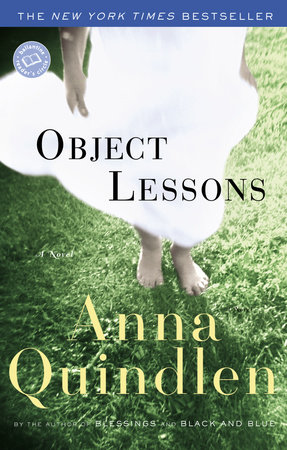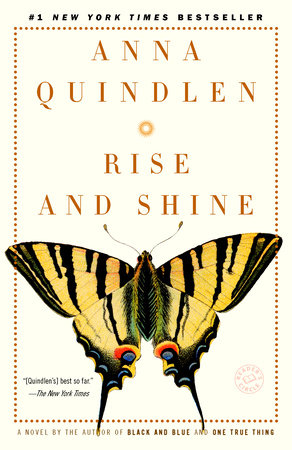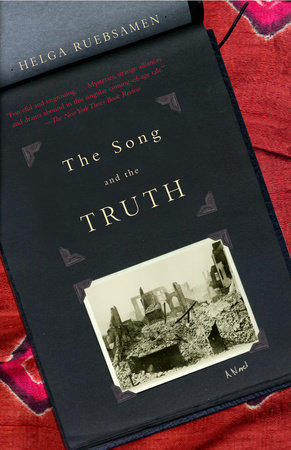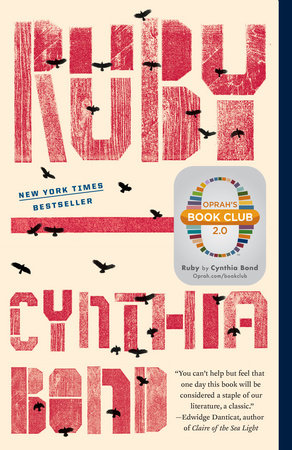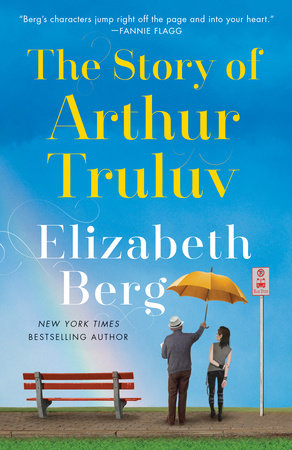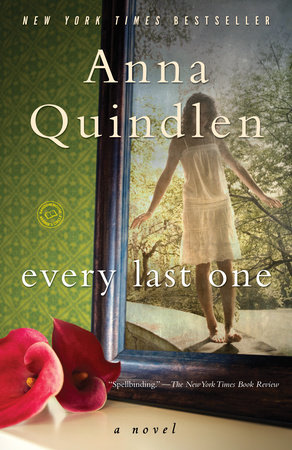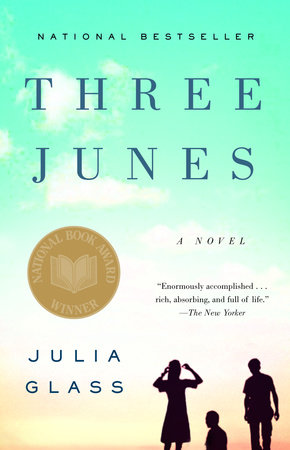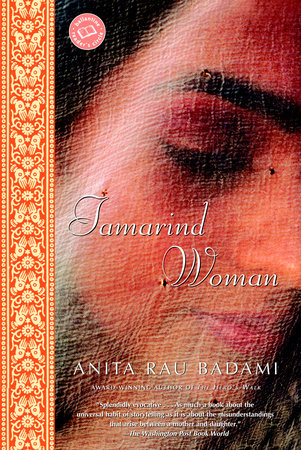Jennifer Morgan Gray is a writer and editor who lives in New York City.
1) Was there a particular image or idea that inspired you to write Object Lessons? Did you begin with a vision of a particular character, a plot occurrence, both or neither?
Object Lessons is my most autobiographical novel–like Maggie Scanlan, I am the daughter of an Irish father and an Italian mother–and so the motivating principle was more overarching than it has been in subsequent books, when I’ve often begun with a single character, image or theme. But I would say that my initial impulse had a good deal to do with the construction of the second-stage suburbs during the 1960s. As much as the counterculture, that sprawl of split levels and ranch houses changed America and how Americans saw themselves. And it was a metaphor, I think, for taking a good hard look at the old ways and mores. That’s an important theme of the book.
2) Was there a mood you hoped to evoke by calling the novel Object Lessons? Were there any other titles you considered and then abandoned? What are the “object lessons” that you think the characters–Maggie and Connie in particular–learn in the book?
Oy. Do I have to tell the truth about this? I am terrible with titles, although I’ve gotten better and better over the years. But Object Lessons was my first book, and so I found it particularly difficult to reduce this one to a handful of words. I remember saying “Titles are so reductionist” and having my editor reply, sensibly, “Yes, but a book needs to have one.” In fact I dithered so persistently that we dummied up one version of the cover with the line Title TK, which means Title to come. Then the director of publicity at Random House read it and said, “Well, I think it’s all about object lessons, about those central tenets we learn from experience.” It was kind of a kaboom moment. I only wish it had been my kaboom moment!
3) You frame the book from its very first pages as taking place in a summer that’s “the time of changes.” Why did you decide to explicitly mention the events that take place later in the novel, like John Scanlan’s stroke and the demise of Maggie and Debbie’s friendship, in the first chapter of the book? Did you know what would happen in Object Lessons when you started writing, or were you surprised along the way?
I always know what will happen at the end when I begin a novel. The beginning and the end are never really the journey of discovery for me. It is the middle that remains a puzzle until well into the writing. That’s how life is most of the time, isn’t it? You know where you are, and where you hope to wind up. It’s the getting there that’s challenging. Besides, I don’t think the trajectory of Object Lessons is about John Scanlan, or even Debbie. It’s about that moment when Maggie can think of herself as an individual separate from others. That’s the ending.
4) Object Lessons is set in the 1960s as sweeping social changes are beginning to take hold in the United States, but these changes are slow to creep into the town of Kenwood. In what ways did you intend to depict the town as an idyllic place to grow up? How did you picture it as “frozen in time”? How do you think that Kenwood’s reaction to altering the status quo mirrored the reality of the world at that time?
I don’t think most of what we call the 60s actually took place in the 60s. In San Francisco and New York and on some college campuses, sure. But if you go back and look at photos in most places, of most people, you don’t see long hair or tie dyes. My high school yearbook, circa 1970, has a handful of hippie looks but mostly people are pretty straight. But the fault lines were beginning to subtly appear. The changes in the Catholic Church. The growing political disenchantment in the years after the Kennedy assassination. The peace movement and women’s liberation. The earth was rumbling during the time covered by this novel. It hadn’t opened yet.
5) Some reviewers have wondered if Maggie is, in some ways, a young stand-in for you. How much of your own character is in Maggie? Why do you think that readers are so intrigued by trying to figure out how much autobiography exists in a writer’s fictional works?
Oh, I think everyone wants to disbelieve the notion of fiction. It’s too much, to think that someone could invent an entire believable world from scratch. And that goes double if you’ve been a newspaper reporter, as I was, trained to deal in something approaching literal truth. There are certainly similarities between Anna and Maggie, although she is preternaturally wise and a little judgmental in a way I was not at her age. I find her a bit of a pain.
6) The struggle between parent and child is paramount in this book–from Maggie and Connie, to Tommy and John, to Connie and Angelo. Which parent-child pairing comes the closest to understanding one another? Is there any element that you view as an “irreconcilable difference” in any of the relationships?
The most irreconcilable of those relationships is the one between Tommy Scanlan and his dad, mainly because it’s not really a loving relationship on the part of the elder man. It’s one of dominance. That’s always doomed to failure. I think Connie and her father have a genuinely loving bond, although he comes from a culture that likes to keep its children close, and so he is distressed about the obvious ways in which she has pulled away. It’s too soon to know how the relationship between Maggie and Connie will develop, but I will say that of all the characters in the book Connie has the greatest capacity for unconditional love. And that carries you a long way in the long run.
7) In which ways is Connie a renegade, and in which ways does she want to fit in? How is her relationship with Joey break boundaries? How does it put her in closer touch with herself?
I don’t think she means to be a renegade. She’s not born to it, the way Celeste is. She’s just wound up in this role because of the ethnic tensions in her marriage. Reading this book in the early 90s, people thought I had exaggerated that. Someone said to me, “You made it sound almost interracial.” At the time that these people were growing up, that’s exactly what it was like. (Maybe now that everyone has seen My Big Fat Greek Wedding they’ll understand the intractability of certain groups about having their kids marry outside the clan!) It gets tiring always being the outsider. The relationship with Joey is all about spending time with someone who speaks your language and doesn’t see you as the other.
8) It’s interesting that John Scanlan loathes the Kennedys, as he seems such a Joe Kennedy type in many ways. Did you have any inspiration for this larger-than-life personality? Why do you think he and Maggie have such an affinity toward one another?
A lot of Irish Catholic patriarchs of a certain age loathed the Kennedys. It was jealousy, pure and simple. They couldn’t break through with the WASPs of their own community. Somehow, to a limited extent, Kennedy had managed to do so. And they had as many sons, but none of them Senators or fledgling Presidents. Some of them felt the same way about the Kellys of Philadelphia. “Who do you think you are?” might as well be tattooed into the forehead of certain old Irish Catholics, they ask it so much. “Too big for your britches,” too. I think at some level Maggie likes the old man because he is strong and sure of himself. And that’s what she wants to be. And he likes her because she’s smart.
9) You set up a marked contrast between Monica and Maggie. Why do you think Monica harbors such vitriol toward her younger cousin? Why does John Scanlan see through her, while few others do? Are they cut from the same cloth, so to speak?
In some ways Monica and Maggie are protoypes of two very different types of women who will do battle over and over in the decades after the action of this novel ends. One is the woman who will play by all the rules in order to win, who will dress correctly, pretend to be tractable, make herself alluring to men and do whatever it takes to succeed, although the standard of her time is that success comes only through a man. She is basically a hard case, and she is about to get harder because all the rules of what makes a successful woman are about to change on her. Maggie is the kind of girl who will be the beneficiary of those changes in the years to come. She is intelligent and thoughtful. She is interested in prospering on her own terms and the old ways of female manipulation either don’t interest or don’t occur to her. The Monicas and the Maggies will always have a hard time getting along. John Scanlan is amused by the combat. He sees Monica for what she is because he, too, is a hard case.
10) How is Maggie’s desire for order tested by the events of the summer? How is she similar to Tommy, who is a self-admitted “slave to routine”? Will his status as a creature of habit change?
The change of that summer is the catalyst Maggie needs to become herself. It tears her apart, but at the end she can put herself back together. In that way I think she is prototypically female in some sense, and her father prototypically male in that he is quite passive and likely to remain so. The one upheaval he has allowed himself in his life was to marry Connie. But I don’t think he’ll see the like of that moment again.
11) Maggie is drawn toward unconventional female figures, like Helen Malone and her aunt Margaret. How about these women appeals to Maggie? Was there a particular female character that you most enjoyed writing?
Helen Malone is actually based on a kind of older girl that I saw and knew in my own neighborhood growing up, the kind who had the self-assurance of physical attractiveness and the allure of sexual experience. Those girls suffered. They were golden one day and cast out the next, almost always because of pregnancy. It’s one of the ways in which the world has changed for the better since I was young; you don’t have to pay, all the rest of your life, for a mistake you made when your hormones were in overdrive. I was mesmerized by those girls growing up, because they had so much, and because it was so fleeting. It made me very suspicious of those things that came to you because of your physical allure, and very determined to develop my intellect and my will.
12) There’s a constant theme of artifice in Object Lessons. Who do you think is the most masked person in the story? Who’s the most true to his or herself? How do you seek to strip away artifice as a writer?
That’s something I’ve never thought about. I suppose it’s the neighborhood, actually, that’s most artificial, because everyone collectively pretends that life is one way when deep underneath there are all sorts of fissures. It’s like that moment near the end when Maggie can see this couple who have moved into one of the new houses. It seems a tableau of success and contentment, but she intuits that there are endless fault lines. And that’s correct.
13) Object Lessons touches on social issues–divorce, infidelity and teenaged pregnancy, among others. Did you consciously set out to write a novel that included social commentary? Or did these issues emerge while you were writing?
My feeling is that things become social policy issues because they are happening in life, not the other way around. So if you set out to write a realistic novel about America, social issues will inevitably arise in the text. It would be almost impossible to write a novel about, say, marriage, without writing about infidelity. Even Tolstoy had to do it in Anna Karenina, and that was more than a century ago. These are the ways of the world. We just call them social issues when we’re trying to quantify and analyze them somehow. I only do that when I’m wearing my columnist’s hat.
14) I was struck by a statement of Connie’s at the end of the book: “Everything in your life is who you marry.” Would Tommy agree with this? Has Connie truly forgiven Tommy and accepted the realities of her marriage?
Oh, sure. I don’t think you can even argue with that. Who you marry determines what sort of children and family you’ll have, and that shapes your entire life. I don’t think Connie understood that, going in. She thought it was all about her and Tommy, when of course a marriage is a much larger circle than that of two people holding hands. I think she’s made her peace, but she’s going to keep kicking at the larger indignities. Frankly, she’ll be a much happier woman the day after John Scanlan’s funeral.
15) You open and conclude the book with the concept of “here and hereafter.” How do John Scanlan and Maggie share a similar worldview with respect to those two concepts? Does this jive with your perception of the world?
Well, the obvious reference is a religious one. In many ways this is a profoundly Catholic book, and I am a profoundly Catholic writer. But it also refers to the future. John knows that things are changing, in his business and in the lives of his children. He has only to consider his half-Italian granddaughter to know that. And I think he suspects that the hereafter for her will be in a much different society. So does she. That’s the moment at which both of them are poised. One regrets, one embraces. But both understand.
16) In a commencement address at Mount Holyoke, you said, “Listen to that small voice from inside you, that chooses to go the other way.” Who in this novel truly takes this advice to heart? How does it represent a struggle for them? How do you try to heed your own advice?
I never made the connection before, but of course that line in the Holyoke speech describes precisely the moment at the end of Object Lessons when Maggie first hears her own voice in her head. So I would say it would be her, first and foremost. As for me, I have the opposite problem. Because of my life as a novelist and as a columnist, I’m always hearing voices in my head. It’s getting them to shut up and give me a little peace that’s the problem! Usually I have to write it all down first; then I get to watch some TV!
17) Object Lessons was your first published novel. Do you have a particular fondness for it because of that designation? As you look back at it after over a decade has passed, is there anything that you’d approach differently? Has your writing process changed over that span of time?
I’m more surehanded as a novelist now. You hope that’s true, after publishing four and beginning work on the fifth. You just know your way around a fictional mis en scene better than you did first time out. I had to do three full drafts of this book. On my last novel, Blessings, I did a draft and a fairly light reworking and then it was fine. So I suppose it’s like anything else; the more you do it, the better you become. I can’t tell you whether I’d do anything differently because I’ve never reread Object Lessons. The last time I read it was the day I handed the final draft in. Reading my own work makes me sweat; all I can see are the mistakes and the clunks, never the felicitous phrase or the apt characterization. So I just keep pushing on.
18) What are you working on now, either fiction or non-fiction in nature?
I’m writing a novel about two sisters in New York City at the turn of the century. One’s famous; the other’s not. More than that will have to become clear when the thing’s actually done.
